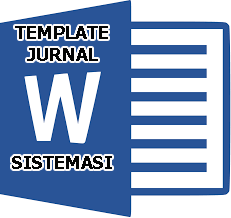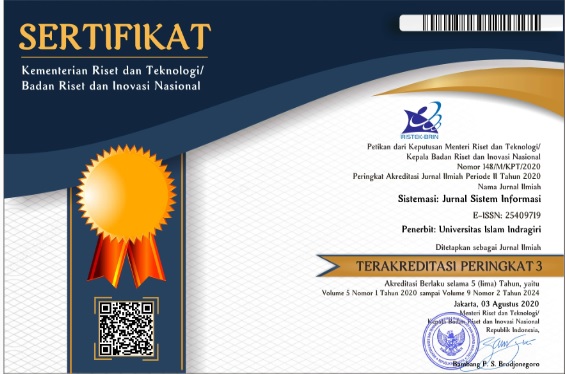Deep Learning-based Identification of Personal Protective Equipment in Construction Area
Abstract
Keywords
Full Text:
PDFReferences
J. H. Lo, L. K. Lin, and C. C. Hung, “Real-Time Personal Protective Equipment Compliance Detection based on Deep Learning Algorithm,” Sustainability (Switzerland), Vol. 15, No. 1, Jan. 2023, doi: 10.3390/su15010391.
M. I. B. Ahmed et al., “Personal Protective Equipment Detection: A Deep-Learning-based Sustainable Approach,” Sustainability (Switzerland), Vol. 15, No. 18, Sep. 2023, doi: 10.3390/su151813990.
D. Thakur, P. Pal, A. Jadhav, N. Kable, V. Bhagyalakshmi, and S. Deshpande, “YOLOv8- based Helmet and Vest Detection System for Safety Assessment,” in 2023 International Conference on Network, Multimedia and Information Technology, NMITCON 2023, 2023. doi: 10.1109/NMITCON58196.2023.10275958.
N. D. T. Yung, W. K. Wong, F. H. Juwono, and Z. A. Sim, “Safety Helmet Detection using Deep Learning: Implementation and Comparative Study using YOLOv5, YOLOv6, and YOLOv7,” in 2022 International Conference on Green Energy, Computing and Sustainable Technology, GECOST 2022, 2022. doi: 10.1109/GECOST55694.2022.10010490.
Y. C. How, A. F. Ab. Nasir, K. F. Muhammad, A. P. P. Abdul Majeed, M. A. Mohd Razman, and M. A. Zakaria, “Glove Defect Detection Via YOLO V5,” MEKATRONIKA, Vol. 3, No. 2, 2022, doi: 10.15282/mekatronika.v3i2.7342.
A. K. Al Bari, E. Rachmawati, and G. Kosala, “Glove Detection System on Laboratory Members using Yolov4,” Journal of Information System Research (JOSH), Vol. 4, No. 4, 2023, doi: 10.47065/josh.v4i4.3806.
V. Isailovic et al., “Compliance of Head-Mounted Personal Protective Equipment by using YOLOv5 Object Detector,” in International Conference on Electrical, Computer, and Energy Technologies, ICECET 2021, 2021. doi: 10.1109/ICECET52533.2021.9698662.
D. Arya, A. Prayoga, M. Taufiqurrochman, A. A. Zein, and M. Khanif, “Deteksi Helm Safety menggunakan Convolutional Neural Networks dan YOLOv3-Tiny,” Vol. 4, No. 1, pp. 1276–1286, Dec. 2024, doi: https://doi.org/10.20895/centive.v4i1.299.
Y. Liu and W. Jiang, “Detection of Wearing Safety Helmet for Workers based on YOLOv4,” in Proceedings - 2021 International Conference on Computer Engineering and Artificial Intelligence, ICCEAI 2021, 2021. doi: 10.1109/ICCEAI52939.2021.00016.
F. Zhou, H. Zhao, and Z. Nie, “Safety Helmet Detection based on YOLOv5,” in Proceedings of 2021 IEEE International Conference on Power Electronics, Computer Applications, ICPECA 2021, 2021. doi: 10.1109/ICPECA51329.2021.9362711.
Z. P. Xu, Y. Zhang, J. Cheng, and G. Ge, “Safety Helmet Wearing Detection based on YOLOv5 of Attention Mechanism,” in Journal of Physics: Conference Series, 2022. doi: 10.1088/1742-6596/2213/1/012038.
Hadi Supriyanto, Sarosa Castrena Abadi, and Aliffa Shalsabilah, “Deteksi Helm Keselamatan menggunakan Jetson Nano dan YOLOv7,” Journal of Applied Computer Science and Technology, Vol. 5, No. 1, 2024, doi: 10.52158/jacost.v5i1.637.
M. Gugssa, A. Gurbuz, J. Wang, J. Ma, and J. Bourgouin, “PPE-Glove Detection for Construction Safety Enhancement based on Transfer Learning,” in Computing in Civil Engineering 2021 - Selected Papers from the ASCE International Conference on Computing in Civil Engineering 2021, 2021. doi: 10.1061/9780784483893.008.
M. Ulum, M. Zakariya, A. Fiqhi, and H. Haryanto, “Rancang Sistem Pendeteksi Alat Pelindung Diri (APD) berbasis Image Prosessing,” Informatics, Electrical and Electronics Engineering (Infotron), Vol. 1, No. 1, 2021, doi: 10.33474/infotron.v1i1.11236.
I. A. Rachimi and F. Utaminingrum, “Deteksi Masker dan Suhu Tubuh untuk Kendali Portal Otomatis menggunakan CNN sebagai Pencegahan Penularan SARS-CoV-2,” 2021. [Online]. Available: http://j-ptiik.ub.ac.id
M. L. R. Collo, J. Richard M. Esguerra, R. V. Sevilla, J. Merin, and D. C. Malunao, “A COVID-19 Safety Monitoring System: Personal Protective Equipment (PPE) Detection using Deep Learning,” in 2022 International Conference on Decision Aid Sciences and Applications, DASA 2022, 2022. doi: 10.1109/DASA54658.2022.9765088.
S. Khosravipour, E. Taghvaei, and N. M. Charkari, “COVID-19 Personal Protective Equipment Detection using Real-Time Deep Learning Methods,” Mar. 2021, [Online]. Available: http://arxiv.org/abs/2103.14878
M. Reza Kusuma, A. Azis Abdillah, D. Junaedi, D. Yanti Liliana, S. Arifin, and dan Zahran Muzakki, “Sistem Deteksi Alat Pelindung Diri di Workshop Alat Berat Politeknik Negeri Jakarta menggunakan Teachable Machine,” 2022. Accessed: May 20, 2025. [Online]. Available: https://prosiding.pnj.ac.id/sntm/article/view/517/365
Z. Syifa Juanda and Z. Khairil Simbolon, “Mengintegrasikan Metode YOLO (You Only Look Once) dalam Deteksi APD (Alat Pelindung Diri) pada Industri Migas,” Vol. 4, No. 1, 2024.
A. Sesis et al., “A Robust Deep Learning Architecture for FireFighter PPEs Detection,” in 2022 IEEE 8th World Forum on Internet of Things, WF-IoT 2022, 2022. doi: 10.1109/WF-IoT54382.2022.10152263.
A. Mumuni and F. Mumuni, “Data Augmentation: A Comprehensive Survey of Modern Approaches,” Array, Vol. 16, Dec. 2022, doi: 10.1016/j.array.2022.100258.
K. W. Church, Z. Chen, and Y. Ma, “Emerging Trends: A Gentle Introduction to Fine-Tuning,” Nat Lang Eng, Vol. 27, No. 6, pp. 763–778, Nov. 2021, doi: 10.1017/S1351324921000322.
S. Panigrahi, A. Nanda, and T. Swarnkar, “A Survey on Transfer Learning,” in Smart Innovation, Systems and Technologies, Springer Science and Business Media Deutschland GmbH, 2021, pp. 781–789. doi: 10.1007/978-981-15-5971-6_83.
A. Wang et al., “YOLOv10: Real-Time End-to-End Object Detection,” May 2024, [Online]. Available: http://arxiv.org/abs/2405.14458
R. Khanam and M. Hussain, “YOLOv11: An Overview of the Key Architectural Enhancements,” Oct. 2024, [Online]. Available: http://arxiv.org/abs/2410.17725
P. Fränti and R. Mariescu-Istodor, “Soft Precision and Recall,” Pattern Recognit Lett, vol. 167, 2023, doi: 10.1016/j.patrec.2023.02.005.
DOI: https://doi.org/10.32520/stmsi.v14i4.5271
Article Metrics
Abstract view : 531 timesPDF - 101 times
Refbacks
- There are currently no refbacks.

This work is licensed under a Creative Commons Attribution-ShareAlike 4.0 International License.









